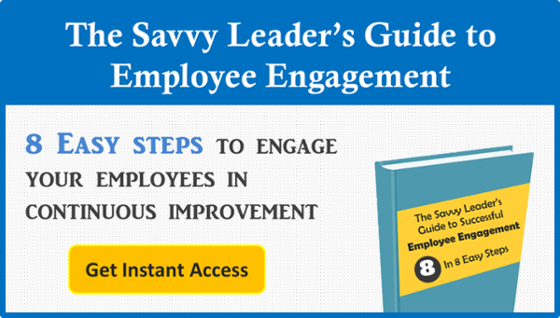 If you’re a regular reader of our blog here at KaiNexus, you’ve probably read a lot about our recent User Conference. If not, you can find some of those posts here and here.
If you’re a regular reader of our blog here at KaiNexus, you’ve probably read a lot about our recent User Conference. If not, you can find some of those posts here and here.
For those unfamiliar with the Annual KaiNexus User Conference, it is the one time each year that we get a bunch of our customers from around the world in one room to share best practices and inspiration around KaiNexus and continuous improvement. Each customer is able to share some of the success stories in their organization and ask other organizations how they were able to solve problems on topics such as strategy deployment, bottom-up improvement, or engagement.
While listening and participating in these conversations, a topic that I heard a lot about was engagement. Particularly, how to improve it. Often, leaders of the organization saw the value in continuous improvement, and so did the managers. Of course, the continuous improvement leaders found it valuable, too. The group that was most discussed was the front-line staff and figuring out how to keep them engaged in the process.
Throughout the conference, I heard about a few solutions for better engaging front-line staff in improvement that organizations used pretty successfully. These solutions all revolved around one thing: making continuous improvement more accessible.
Language
One organization was having trouble in that their frontline staff spoke many different languages. Printing improvement forms in just English did not help their engagement levels because, to more than half of the staff members, English was not their native language! Continuous improvement software was able to help just by listing their improvement framework in a couple different languages. One of the largest KaiNexus customers is South32, a mining company based out of Australia with operations all over the globe, including Africa and South America. With different languages spoken throughout their organization, they were able to engage their staff by putting the improvement work in each locale’s native language.
Terminology
Sometimes it is not just the language that gives staff trouble, but it can be the actual terms used. One of our customers tried to expand their culture of continuous improvement using the original Japanese terms found in continuous improvement. This proved to be a hard sell for his staff; using technical jargon like this made continuous improvement seem intimidating and complex and, as a result, he couldn't get it to catch on. He switched to using terms they were more familiar with (e.g. continuous improvement rather than kaizen) and found that the concept became much more engaging.
Simplification
The bit of advice regarding staff engagement came from Cannistraro, a construction company in Boston. Each of their staff submit at least 8 improvements per year on average. They realized that a ton of improvement work was being done, but it wasn’t always being captured. Some employees would simply make a change when it was needed. To capture this, they introduced the “AI”, or "Adopted Improvement," to KaiNexus. To increase the engagement, they made this form very simple, with only three fields: “I Had This Problem”, “I Made This Change”, and “This Is How It Got Better.”
Every employee was easily able to enter in their improvement after the change was made and record the impact. Making this form simple and accessible for employees was a big factor in increasing engagement.
Whether you are literally changing the language or just changing the words used, making continuous improvement accessible to all employees is key to engaging them.
What have you done to keep improvement accessible and engage your staff members? Comment below to keep the discussion going!



Add a Comment